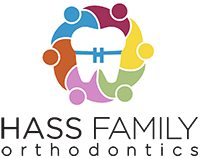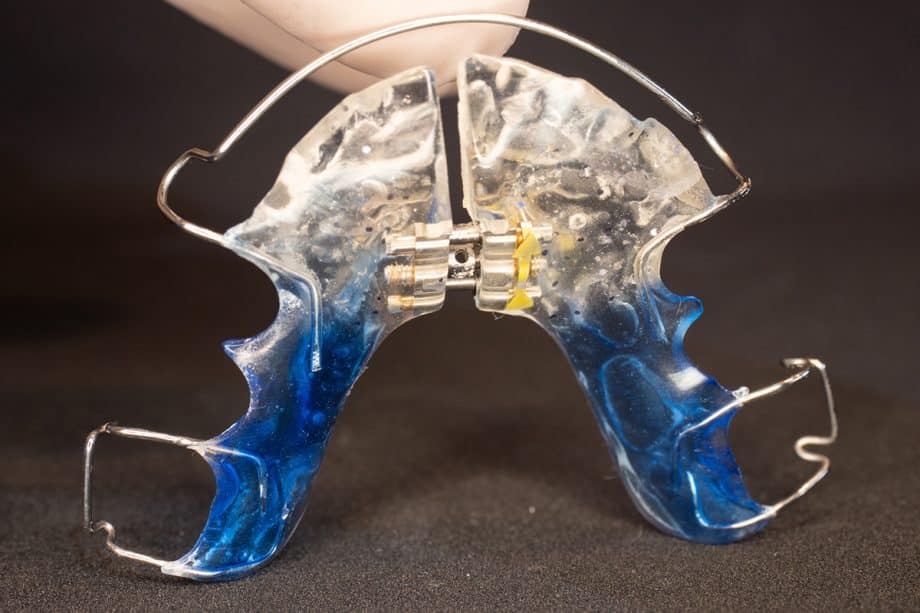A palatal expander is a specialized orthodontic device used to widen the upper jaw. It creates more space in the mouth and addresses issues such as crowding, misalignment, and bite irregularities. When worn, the expander gradually stretches the palate, allowing for proper tooth and jaw alignment.
Beyond improving dental alignment, a palate expander can also enhance breathing. By widening the upper jaw, it increases the floor of the nasal cavity, promoting better airflow and making breathing easier. Thus, it is a valuable orthodontic tool for creating a harmonious smile and improving overall oral and respiratory health.
When Is a Palatal Expander Recommended?
A palatal expander is often prescribed when a patient’s upper jaw is too narrow, affecting the bite and the positioning of teeth. It is particularly effective as an early orthodontic intervention for children and younger teens, as their bones are still developing, making expansion easier and more predictable.
One of the most common conditions treated with an expander is a posterior crossbite, in which the upper teeth sit inside the lower teeth instead of aligning properly. Additionally, an expander is used to make space for crowded teeth, reducing the likelihood of needing permanent tooth extractions in the future.
While palate expanders are most successful when used in younger patients, some adults can also benefit from this treatment. However, since adult bones are fully developed, expansion may require additional procedures to achieve the desired results.
Palatal expanders help align the teeth and improve the bite by widening the upper arch. They also enhance the shape of the smile, resulting in a broader, more balanced appearance.
Eating with a Palatal Expander: What to Know
While wearing a palatal expander, eating remains manageable, but there are some food restrictions to follow to avoid damaging the device. Patients should avoid:
- Sticky foods like gum, caramel, and taffy can get lodged in the expander.
- Hard foods such as popcorn, nuts, and hard candies could break or dislodge the appliance.
- Crunchy fruits and vegetables, such as apples, carrots, and celery, should be cut into small, bite-sized pieces to make chewing easier and prevent stress on the expander.
By following these dietary guidelines, patients can ensure their expander remains intact while still enjoying a varied and healthy diet.
Do Palatal Expanders Hurt?
One of the most common concerns about palatal expanders is whether they cause pain. Fortunately, while there may be some initial discomfort, the process is not typically painful.
For the first few days after getting the expander, patients may experience:
- Mild pressure or tightness in the teeth and roof of the mouth.
- Temporary difficulty speaking or eating as they adjust to the appliance.
During treatment, the expander must be turned regularly using a small key to widen the palate gradually. This process is simple but requires assistance from a parent or caregiver for children. Although turning the expander may cause mild pressure, it should not be painful, and any discomfort typically fades quickly.
Most patients adapt to the expander within a few days, and any initial soreness can be managed with soft foods and, if necessary, over-the-counter pain relievers.
How Long Do Palate Expanders Stay in Place?
While the active expansion phase of treatment typically lasts only three to six weeks, the expander is usually kept in place for around 12 months. This additional time allows the newly expanded bone to mature and stabilize fully, ensuring long-lasting results.
If the expander is removed too soon, the palate could shift back to its original position, reducing the effectiveness of the treatment. That’s why orthodontists monitor progress carefully and determine the ideal length of time the expander should remain in place.
Frequently Asked Questions About Palatal Expanders
How do I clean my palatal expander?
Keeping your palatal expander clean is essential for maintaining good oral hygiene. Brush your teeth and expander thoroughly twice a day, paying extra attention to the areas around the appliance where food can get trapped. Using a water flosser or mouth rinse can also help remove debris and bacteria. Avoid sticky foods that may get lodged in the device, and follow your orthodontist’s cleaning recommendations.
Can a palatal expander affect speech?
Yes, a palatal expander may temporarily affect speech, especially in the first few days after placement. Some patients experience a slight lisp or difficulty pronouncing certain words, but this typically improves as the tongue adjusts to the new appliance. Practicing reading out loud and speaking slowly can help speed up the adjustment period. Most patients adapt within a week or two, and any speech changes are temporary.
Interested in Learning More About Palatal Expanders? Contact Hass Family Orthodontics Today
If you’re considering a palatal expander for your child or want to explore other early orthodontic treatments, our team is here to help. We offer a range of orthodontic solutions, from expanders to braces and Invisalign, ensuring the best care for your child’s smile. Contact us today to schedule a consultation and learn more about how orthodontic treatment can benefit your child’s dental health. Call today at 828-464-5300 or request an appointment online.

